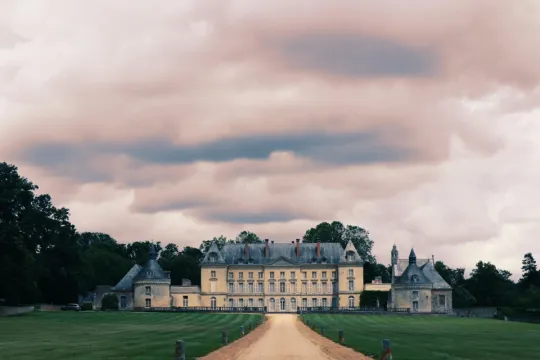Neuschwanstein Castle: A Romantic Gem in Bavaria

Neuschwanstein Castle , located in Bavaria, Germany, is one of the most iconic and visited monuments in Europe. With its fairytale-like appearance, soaring towers, and enchanting setting, it attracts millions of visitors from around the world every year. Inspired by medieval architecture and Germanic legends, this castle was built under the orders of King Ludwig II of Bavaria , a fascinating and mysterious ruler.
In this article, we will explore the history of Neuschwanstein Castle, its architecture, the reasons for its construction, its cultural influence, and why it remains a must-see site today.
- History and origin of Neuschwanstein Castle
1.1. The vision of King Ludwig II of Bavaria
Neuschwanstein Castle was built in 1869 by Ludwig II of Bavaria , nicknamed the "Fairy Tale King." A lover of art, music, and medieval architecture, this ruler dreamed of a castle that would embody his romantic and chivalric ideals. A great admirer of Richard Wagner 's opera, he wanted his castle to pay homage to the Germanic legends that the composer depicted in his works.
Neuschwanstein was meant to be a refuge from court politics and intrigue, a place where Ludwig II could escape into a world of dreams and poetry.
1.2. Construction interrupted by the death of the king
Construction work began in 1869 , but the castle was never fully completed. In 1886 , Ludwig II was declared unfit to rule and interned for mental health reasons. A few days later, he was found dead in mysterious circumstances, drowned in Lake Starnberg. His disappearance put an end to construction, and only a few rooms of the castle were completed according to his original vision.
- Architecture inspired by fairy tales
2.1. A mixture of medieval and romantic styles
Neuschwanstein Castle is inspired by the architecture of medieval fortresses , with late Gothic and Romanesque influences. However, it is not a true medieval castle, but rather an idealized interpretation of the chivalric era.
Its most notable architectural elements include:
- Soaring towers and ramparts reminiscent of medieval castles
- Interior frescoes inspired by Germanic legends and Wagner's operas
- Large windows and balconies offering spectacular views of the Bavarian Alps
- A richly decorated interior , mixing gold, marble and wall paintings
2.2. A technological feat for the time
Although its appearance is inspired by the Middle Ages, Neuschwanstein benefited from the technological advances of the 19th century:
- A central heating system , rare for the time
- Modern lighting , first gas and then electricity
- Advanced sanitation , with running water and flush toilets
- A freight elevator , allowing food to be delivered to the different floors
- The cultural influence of the castle
3.1. An inspiration for the Disney castle
Neuschwanstein is often considered the quintessential fairy tale castle . Its majestic appearance and white turrets served as the model for Walt Disney 's Sleeping Beauty Castle .
In 1955, when Disneyland was founded in California , Walt Disney drew inspiration from Neuschwanstein to design the famous Sleeping Beauty Castle . This castle has become one of the most recognizable symbols of the Disney universe.
3.2. A framework for films and artistic works
The castle has also served as a setting for numerous films and art productions, including the 1968 film Chitty Chitty Bang Bang and various storybook adaptations.
- A must-see tourist destination
4.1. One of the most visited castles in Europe
With approximately 1.5 million visitors annually, Neuschwanstein is one of the most famous castles in the world. Its success can be explained by several factors:
- Its spectacular setting , perched on a hill with breathtaking views of the Alps
- Its fascinating story , mixing dreams, tragedy and mystery
- Its unique architecture , worthy of a fairy tale setting
4.2. How to visit the castle?
The castle is located near the town of Füssen , Bavaria. There are several ways to get there:
- By train from Munich to Füssen, then by bus to the village of Hohenschwangau
- By car , taking the Bavarian Romantic Road
- On foot or by horse-drawn carriage , to go up to the castle from the village
Once there, visitors can discover the interior of the castle through a guided tour of approximately 30 minutes.
4.3. Best time to visit
The seasons influence the experience of the visit:
- Summer , with pleasant temperatures but a large crowd
- Autumn , ideal for admiring the colors of the surrounding forests
- Winter , offering a magical landscape with snow covering the castle
- The legends and mysteries surrounding the castle
5.1. The curse of Louis II?
Some believe Neuschwanstein Castle is cursed due to the tragic death of its creator before its completion. Some theories even suggest a murder disguised as an accident.
5.2. A haunted castle?
With its mystical charm and tragic past, Neuschwanstein is sometimes associated with ghost stories . Some visitors and staff claim to have felt mysterious presences in certain rooms.
Conclusion: A unique castle in the world
Neuschwanstein Castle is much more than just a tourist attraction. It embodies the dream of a visionary king, an architectural masterpiece, and a timeless source of inspiration for popular culture. Its story, somewhere between dream and tragedy, continues to fascinate, and its magical silhouette attracts millions of visitors each year.
Whether for its magical setting, its connection to Disney, or its romantic history, Neuschwanstein remains one of the world's most iconic castles. Visiting it is an unforgettable experience, combining art, history, and breathtaking scenery.